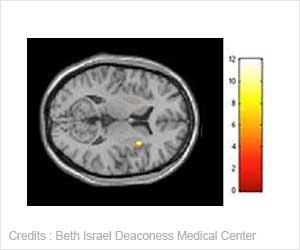Clues that point toward new risk mechanisms for developing Parkinson's disease are hiding in some unusual spots, revealed a new study.

‘Tiny changes in DNA that have been linked to Parkinson's were found not only in brain cells, where they were expected, but also in liver, fat, immune and developmental cells.’





"When we looked at the data, we were quite surprised to see the variation in tissue types," said Gerry Coetzee, a professor at Van Andel Research Institute (VARI) and the study's corresponding author. "Ultimately, if we can more precisely define risk factors for Parkinson's, we can develop ways to mitigate them early on. We still have a long way to go but these findings are some of the first steps down that path." Although these changes, called single-nucleotide polymorphisms (SNPs), are very small, an accumulation of enough SNPs can significantly heighten a person's risk for developing Parkinson's. It can be likened to dropping sand onto a scale - a single grain will have little effect, but if enough grains are added, the balance will tip.
The human genome contains about 80 million SNPs, many of them located in regions of the DNA that were once thought to be junk. Scientists now know that these areas, located outside of genes on the DNA, play critical roles in regulating gene expression and are a useful tool for matching a particular gene with its function or role in disease.
As such, investigating SNPs linked to Parkinson's offers a unique opportunity to answer one of the major questions in Parkinson's research - what causes or contributes to the disease? While scientists know that five to 10% of Parkinson's cases are passed down genetically through families, they're still determining what's behind the majority of cases. The prevailing theory is a mix of genetic and environmental factors create a perfect storm, leading to the hallmark clumping of abnormal proteins that spread through the brain, killing cells that produce a chemical called dopamine that is vital for voluntary movement.
Using information from the federally funded Roadmap Epigenomics Mapping Consortium as a guide, Coetzee, the team at VARI and collaborators at Cedars-Sinai in Los Angeles analyzed 21 of these risk areas, called loci, in 77 cell types. Of these, the team found 12 loci across several tissue types that were particularly enriched - or full of SNPS - indicating an increase in risk.
Advertisement
Although much more work must be done to unravel exactly how these loci affect risk, there are interesting parallels between the team's findings and recent work done by others investigating Parkinson's. For example, three of the risk loci were found in immune cells, a promising finding as evidence suggests that Parkinson's may be linked to inflammation, the immune system's reaction to help fight off potential threats.
Advertisement
Source-Eurekalert








